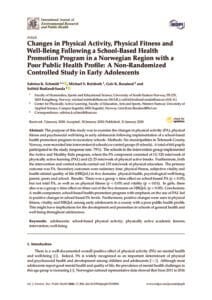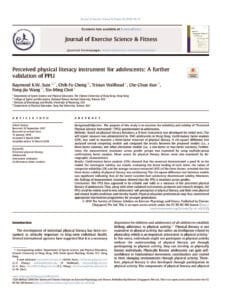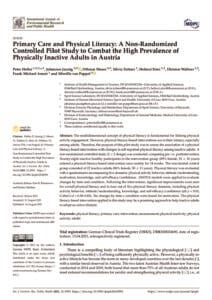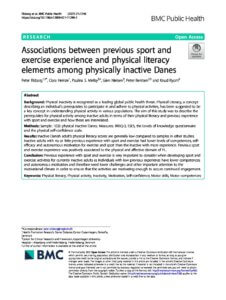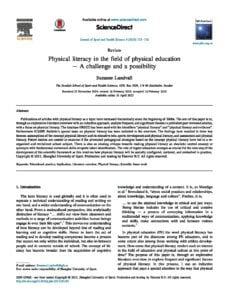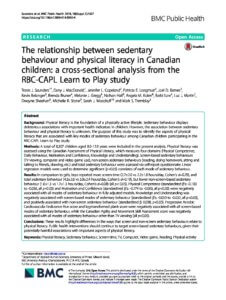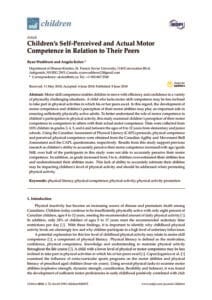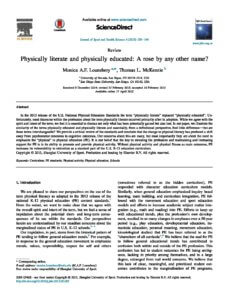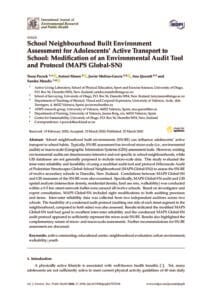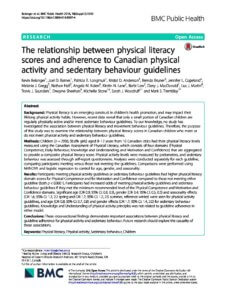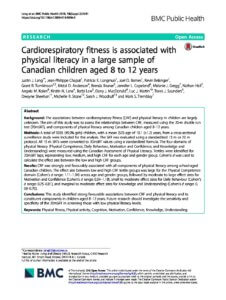-
Changes in Physical Activity, Physical Fitness and Well-Being Following a School-Based Health Promotion Program in a Norwegian Region with a Poor Public Health Profile: A Non-Randomized Controlled Study in Early Adolescents
Purpose: The purpose of this study was to examine the changes in physical activity (PA), physical fitness and psychosocial well-being in early adolescents following implementation… -
Creativity in Motion: Examining the Creative Potential System and Enriched Movement Activities as a Way to Ignite It
Abstract In a global and highly competitive world, the importance of creativity is increasing as it supports adaptability, health, and actualization. Yet, because most research… -
Perceived physical literacy instrument for adolescents: A further validation of PPLI
Background/Objective The purpose of this study is to examine the reliability and validity of “Perceived Physical Literacy Instrument” (PPLI) questionnaire in adolescents. Methods Based on… -
Primary Care and Physical Literacy: A Non-Randomized Controlled Pilot Study to Combat the High Prevalence of Physically Inactive Adults in Austria
Abstract The multidimensional concept of physical literacy is fundamental for lifelong physical activity engagement. However, physical literacy-based interventions are in their infancy, especially among adults.… -
Associations between previous sport and exercise experience and physical literacy elements among physically inactive Danes
Background Physical inactivity is recognized as a leading global public health threat. Physical Literacy, a concept describing an individual’s prerequisites to participate in and adhere… -
Physical literacy in the field of physical education
Abstract: Publications of articles with physical literacy as a topic have increased dramatically since the beginning of 2000s. The aim of this paper is to,… -
The relationship between sedentary behaviour and physical literacy in Canadian children: a cross-sectional analysis from the RBC-CAPL Learn to Play study
Background Physical literacy is the foundation of a physically active lifestyle. Sedentary behaviour displays deleterious associations with important health indicators in children. However, the association… -
Children’s Self-Perceived and Actual Motor Competence in Relation to Their Peers
Abstract Motor skill competence enables children to move with efficiency and confidence in a variety of physically challenging situations. A child who lacks motor skill… -
Physically literate and physically educated: A rose by any other name?
Abstract In the 2013 release of the U.S. National Physical Education Standards the term “physically literate” replaced “physically educated”. Unfortunately, most discourse within the profession… -
School Neighbourhood Built Environment Assessment for Adolescents’ Active Transport to School: Modification of an Environmental Audit Tool and Protocol (MAPS Global-SN)
Abstract School neighbourhood built environments (SN-BE) can influence adolescents’ active transport to school habits. Typically, SN-BE assessment has involved micro-scale (i.e., environmental audits) or macro-scale… -
The relationship between physical literacy scores and adherence to Canadian physical activity and sedentary behaviour guidelines
Background Physical literacy is an emerging construct in children’s health promotion, and may impact their lifelong physical activity habits. However, recent data reveal that only… -
Cardiorespiratory fitness is associated with physical literacy in a large sample of Canadian children aged 8 to 12 years
Background The associations between cardiorespiratory fitness (CRF) and physical literacy in children are largely unknown. The aim of this study was to assess the relationships…


